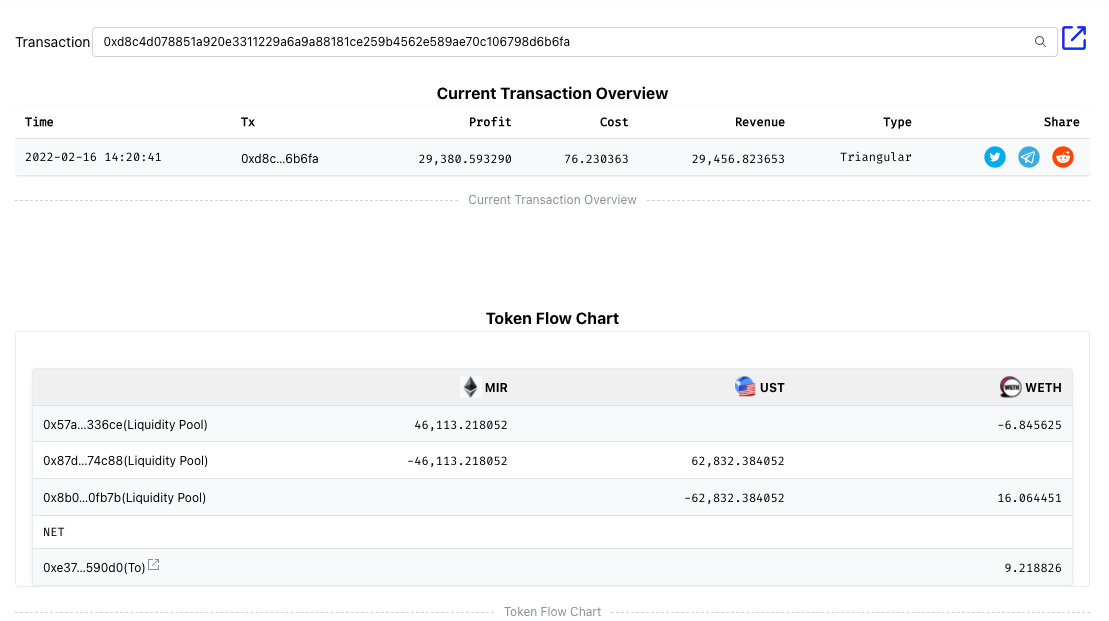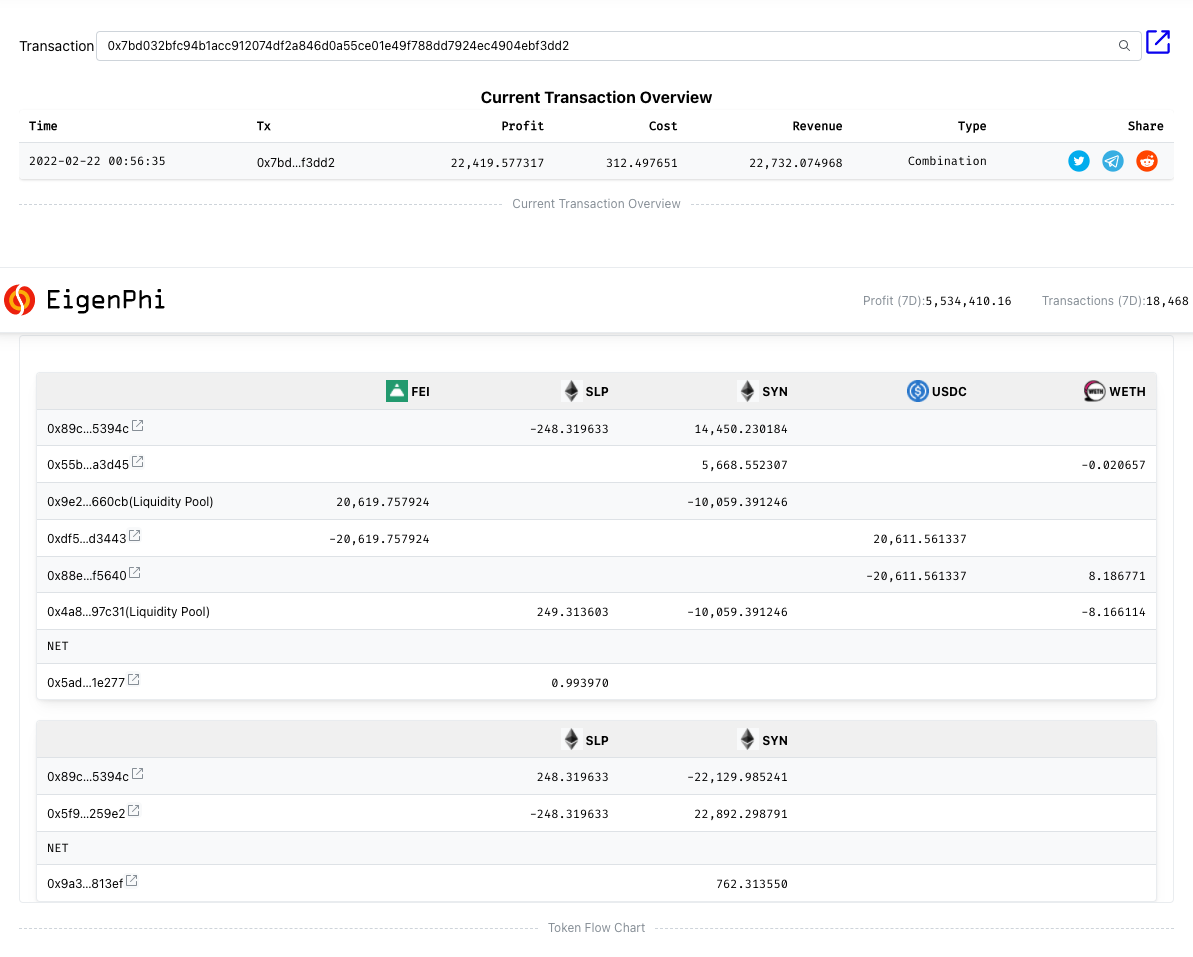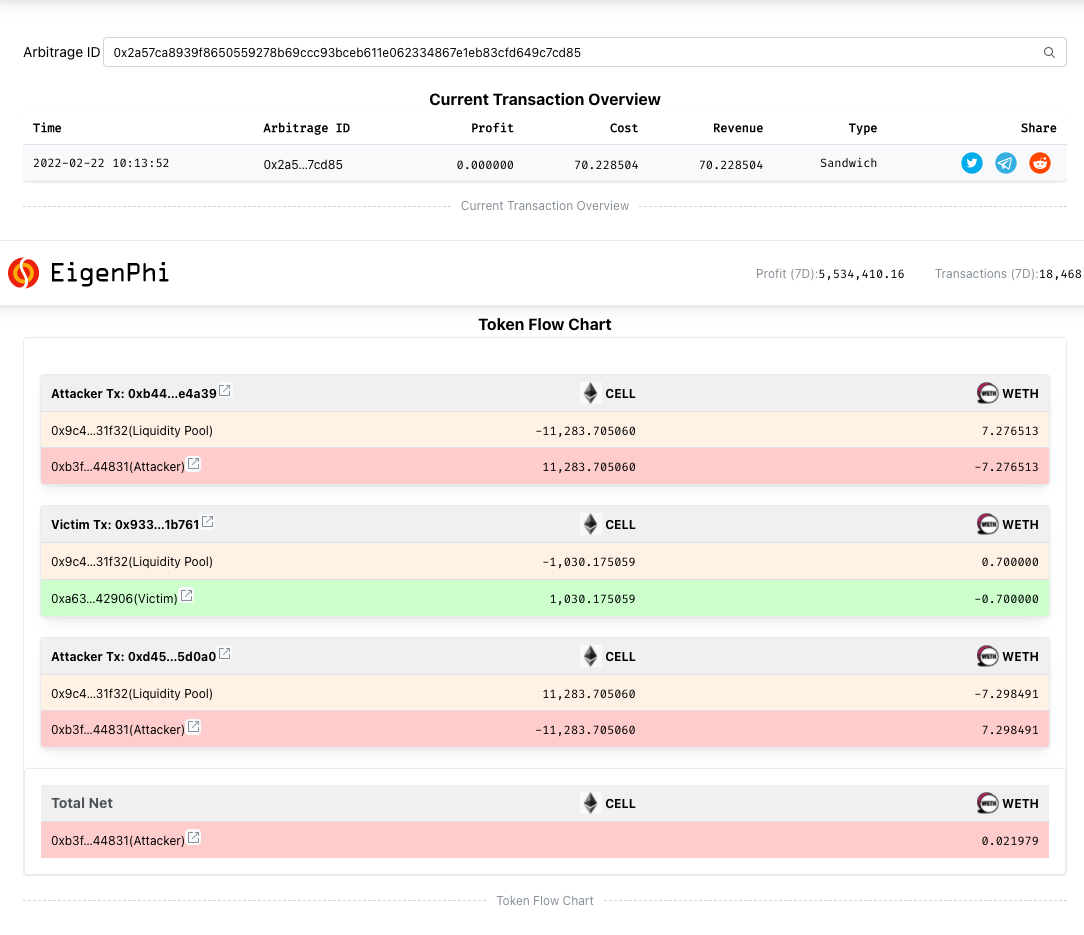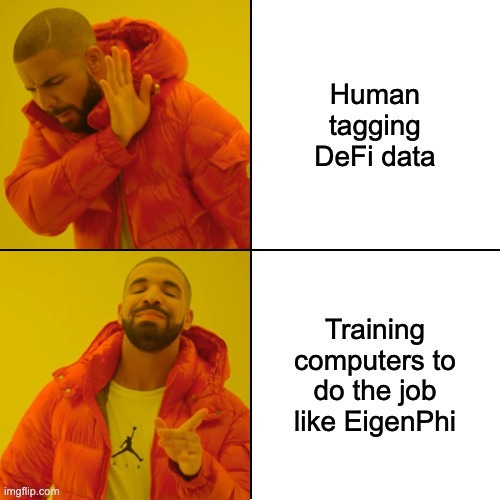TLDR: The history of web search engines will replay in the DeFi universe regarding myriad data processing. Computer-enabled platforms like EigenPhi will prevail over human-tagging approaches, just as Google dominated Yahoo!.

We Need to Make Crypto Transactions Safe, Reliable, and Approachable
In Three things Web3 should fix in 2022, Casey Newton, the founder and editor of the daily Tech newsletter Platformer, pointed out the first one should be: to make crypto transactions safe, reliable, and approachable to normal people.
Mr. Newton's request needs tremendous endeavour. So many things are happening in the crypto world now. Someone is trying to conceal the transaction details, which the dark web welcomes. Someone is taking advantage of the current defective mechanisms to make millions. It's no secret that the system is flawed, like a patient with several chronic diseases that make their host choppy all the time.
A few days ago, Reuters reported the first woman cured of HIV. Stem cell transplant is the miraculous treatment that helps the woman generate immune cells lacking receptors used by the virus to infect cells. Meanwhile, more and more researchers and doctors are working on cell and gene structure levels to develop customized medical procedures to help individual patients, all of which attribute to human beings' knowledge regarding ourselves' microscopic structures.
Likewise, to allow everyone to enjoy safe, reliable, and approachable crypto transactions, we the BUIDLers have to start identifying the structures of those transactions with accuracy and efficiency and present these structures with comprehensibility. But how to manage it? The history of technologies is an excellent place to begin. So let me take you back to the early days of the Internet.
How did people search for information in the pre-Google era?
It's hard to imagine, these days, using the Internet every day without opening Google. Well, there was a time when the primary path to the website you wished to visit was using a web directory, i.e. Yahoo!.
In January 2000, Yahoo! became the most valuable company in the world at the time, worth about 125 billion USD. In 2016, Verizon acquired the core business of Yahoo! for 4.8 billion USD. Forbes called it "the saddest deal in tech history." The rollercoaster ride results from Yahoo!'s approach to website searching.
To visit your target, first, you need to open Yahoo!'s page, then choose the directory that you guess contains the website. Usually, the directory has several hierarchies, which means the user needs to go through a few clicks on corresponding pages and wait for every page to load with the pre-history bandwidth. Not to mention that sometimes the web catalogue had not collected the website's information or put it under the wrong categories.

During that era, the Yahoo!-way was effective in processing not so many pages on the web. The directories relied on humans to review websites, extract descriptions, and organize them. However, with the explosion of the newly minted websites, search services like Yahoo! faced the continuously accumulative pressures of keeping the web categories as they were.
In came Google.
From the start, Google's Larry Page and Sergey Brin embedded their more** in-depth understanding of the webpage's structure** into their product: the search engine utilizing the computer's power instead of humans to support its algorithm - the page-ranking system behind the simple search box.
The most astounding part of the story is: in 1998, Larry and Sergey offered their core technology to David Filo, one of the founders of Yahoo!, with the price tag of $1 million. Instead, the latter turned it down and convinced them to build the search product themselves.
The rest is history.
Crypto and Web3: Bigger Than the Internet
Fast forward to the age of DeFi. Take a look at the chart below, which shows the Ethereum Daily Transactions numbers.

Since July 2020, the daily transactions count on Ethereum has almost always been over 1 million. Given all the other on-chain data, it's just natural to feel drowned in it.
To give you more sense of the problem, Decentralized exchanges (DEXs) reported more than $1 trillion in trading volumes in the year 2021, according to The Block Research. This figure is an enormous 858% increase compared to 2020 DEX trading volumes, over $115 billion.
There is much more to come in the future.
In Messari's Crypto Theses for 2022, talking about the crypto and web3, the founder Ryan Selkis wrote: "We're at the brink of a total transformation of the global economy. One that's bigger than mobile, and maybe even the Internet itself."
Being aware of the severity of the problem, plenty of teams are working on it. But, unfortunately, and astonishingly, some groups chose to ask users to tag the transactions one by one, which is unthinkable when thinking about "the saddest deal in tech history."
By the way, how can you ask users to put labels on the dataset that will be bigger than the Internet? Unless open a sweatshop like Facebook and outsource the nonsensical job to some third-party company paying people only $1.5 per hour. The last time I check, we are still the good guys decentralizing the big Techs to make the world better and more equal.
EigenPhi/Google Way of Identifying the Structure of DeFi Transactions
Like Google, EigenPhi's talented team develop our algorithms to identify the in-depth structures of the DeFi transactions. And we also unveil these structures to the public to exhibit the most relevant contracts and transactions. In essence, **EigenPhi's mission is to elucidate the wisdom of DeFi, **which is the most enormous and ever-growing human behaviour dataset ever.
Visiting EigenPhi.io, you can discover the Top 10 leading #MEV contracts, their complex transactions marked by types, including spatial, triangular, combination, and sandwich. We precisely illustrate how these transactions are implemented without unnecessary details. The flow chart on the transaction detail page presents all the cunning steps of these interactions among the LPs and hodlers.
Below are the Top 10 leading MEV contracts in the last seven days.

This picture shows a spatial arbitrage and its token flow chart.

You can find the details of a triangular arbitrage transaction in the graph below.

Combination arbitrage is hard to decode unless you examine it in our product.

Sandwich arbitrage detection is our newly minted feature.

You can also find the new Liquidity Pools, Frequently Used Pools, and Malicious Tokens.
All the knowledge above is extracted by our system automatically using our propriety software. We choose the path on which Google walks to boost people's understanding of crypto transactions to make them safe, reliable, and approachable, thus fixing the problem of Web3.
In the long run, facing the mounting pressure of data's exponential growth, we have to employ the best tool - computer to get the most out of the information to buidl a better future and world.

This article is the first piece of the series Wisdom Of DeFi. Next, we will discuss the good data analytic tools that hit the bull's-eye versus the bad ones that make you tear your hair.
Meanwhile, please feel free to check out the quick tour of EigenPhi and how it can help you decipher the wealth code of DeFi.
To find out how we achieve the goal, please feel free to follow us on Discord, Medium, Revue, Substack, and Twitter.
Interested in receiving the latest MEV alert? Follow EigenPhi MEV🤖 Alert.